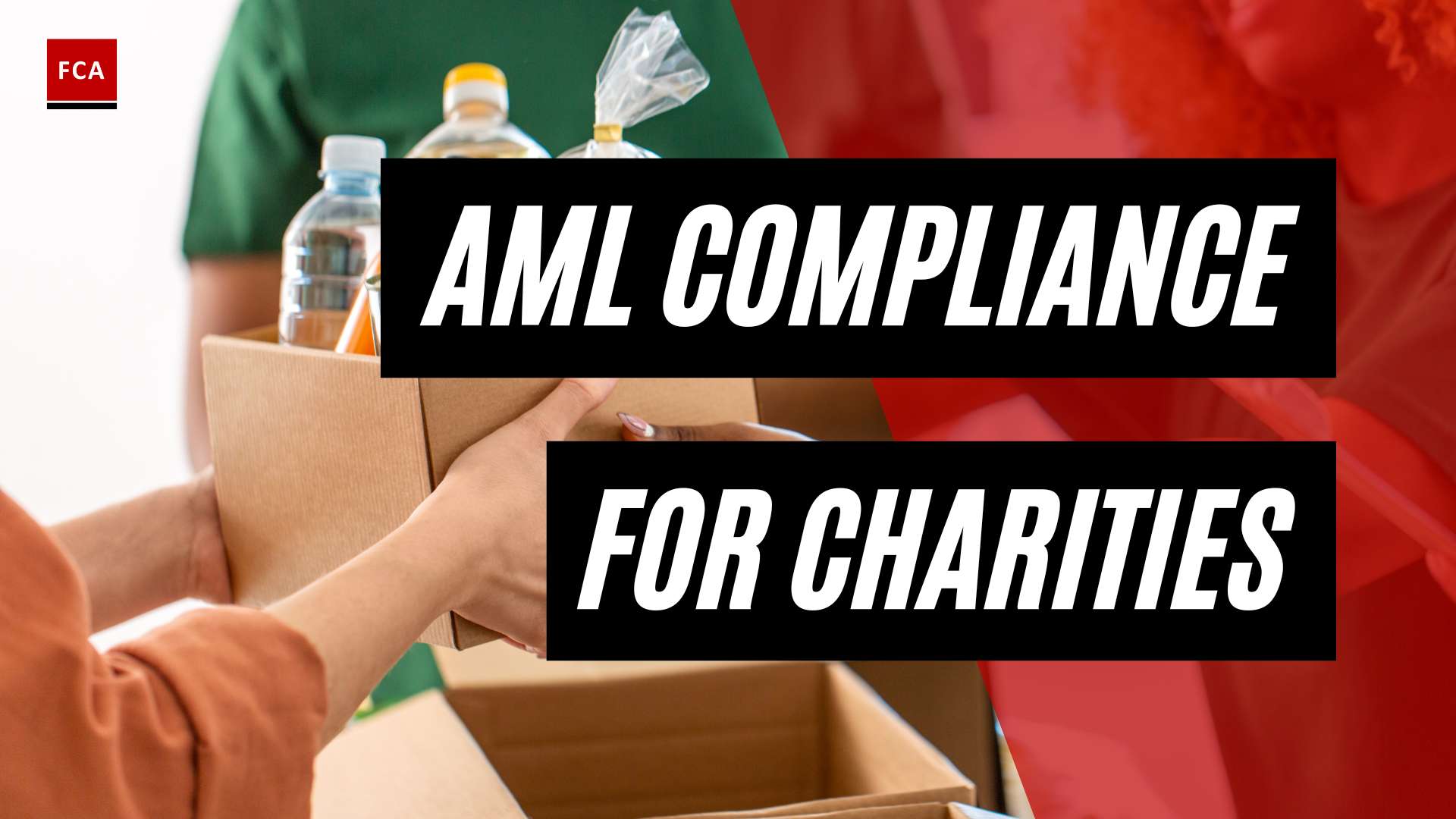AML Reporting Obligations
To effectively combat money laundering and illicit financial activities, financial institutions and other regulated entities have AML (Anti-Money Laundering) reporting obligations. Understanding AML reporting thresholds, the importance of AML transaction monitoring, and the cost of non-compliance are crucial aspects of maintaining regulatory compliance.
Understanding AML Reporting Thresholds
AML reporting thresholds are established by regulatory bodies such as FINRA (Financial Industry Regulatory Authority) to help identify and report potentially suspicious activities to the appropriate authorities (FINRA). These thresholds act as triggers for financial institutions to monitor and report transactions that meet or exceed certain predefined criteria. By setting reporting thresholds, institutions can better identify transactions that require further investigation to detect and prevent money laundering and other financial crimes.
Importance of AML Transaction Monitoring
AML transaction monitoring plays a vital role in identifying and preventing illicit financial activities. Financial institutions are required to implement robust transaction monitoring systems to detect suspicious patterns or behaviors that may indicate money laundering or other criminal activities. By monitoring customer transactions, institutions can identify unusual or potentially suspicious activities and initiate appropriate responses.
Transaction monitoring thresholds need to strike a delicate balance between generating false positive alerts and potentially missing genuine criminal behavior. False positives can lead to unnecessary investigations, which can be time-consuming and costly for financial institutions. Conversely, missing genuine suspicious activities can result in severe financial and legal penalties for non-compliance (ComplyAdvantage).
The Cost of Non-Compliance
Non-compliance with AML reporting obligations can have significant consequences for financial institutions. Inefficient transaction monitoring and false positive alerts can cost institutions an estimated $3.5 billion annually, highlighting the critical importance of effective AML transaction monitoring (ComplyAdvantage). Financial institutions may face financial penalties, reputational damage, loss of customer trust, and even legal ramifications for non-compliance with AML reporting requirements.
To mitigate the risk of non-compliance, financial institutions must establish robust AML reporting systems, implement effective transaction monitoring thresholds, and ensure compliance with AML regulatory requirements. This includes staying updated on evolving compliance regulations, leveraging advanced technologies such as AI and machine learning for accurate monitoring, and continually reassessing and adapting monitoring thresholds to align with changing risk profiles and regulatory environments.
By understanding AML reporting thresholds, recognizing the importance of AML transaction monitoring, and acknowledging the potential consequences of non-compliance, financial institutions can take proactive measures to ensure compliance with AML regulations and contribute to the global fight against money laundering and financial crimes.
Setting Effective AML Transaction Monitoring Thresholds
To ensure effective Anti-Money Laundering (AML) compliance, financial institutions must carefully set transaction monitoring thresholds. These thresholds play a crucial role in identifying suspicious activity and potential money laundering risks. In this section, we will explore key considerations for setting effective AML transaction monitoring thresholds, including balancing false positives and missed suspicious activity, leveraging artificial intelligence and machine learning, and the importance of ongoing assessment and adaptation.
Balancing False Positives and Missed Suspicious Activity
Finding the right balance between generating false positive alerts and potentially missing genuine criminal behavior is critical in AML transaction monitoring. Financial institutions must carefully consider the sensitivity of the monitoring thresholds they set to achieve this balance. While strict thresholds may generate a higher number of false positives, lenient thresholds may result in missed suspicious activity, which could lead to financial and legal penalties of noncompliance (ComplyAdvantage).
Striking the right balance requires a comprehensive understanding of customer behavior, risk profiles, and transaction patterns. Institutions should establish risk-based frameworks that take into account factors such as transaction size, frequency, and nature to determine which transactions warrant further scrutiny. Regular reviews and adjustments to these thresholds are essential to optimize the effectiveness of AML transaction monitoring.
Leveraging Artificial Intelligence and Machine Learning
Artificial intelligence (AI) and machine learning (ML) technologies offer significant benefits in determining optimal transaction monitoring thresholds. By analyzing vast amounts of customer data and risk profiles, AI and ML models can automatically segment customers based on algorithmic analysis. This enables financial institutions to set more accurate thresholds tailored to individual risk profiles, reducing false positives and enhancing the detection of suspicious activity (ComplyAdvantage).
AI and ML can also improve the efficiency of AML transaction monitoring systems by continuously learning from new data and adapting to evolving money laundering techniques. These technologies can detect patterns and anomalies that may go unnoticed by traditional rule-based systems, allowing for more effective identification of suspicious transactions.
Ongoing Assessment and Adaptation
Setting effective AML transaction monitoring thresholds is not a one-time task. Financial institutions must recognize that customer risk profiles, criminal methodologies, and regulatory environments are constantly evolving. Therefore, ongoing assessment and adaptation of transaction monitoring thresholds are crucial.
Regularly reassessing the rules and thresholds used for generating alerts is essential to ensure they remain aligned with changing risks and regulatory requirements. Financial institutions should stay updated on AML compliance regulations and best practices and implement a robust framework for monitoring and evaluating the effectiveness of their transaction monitoring thresholds.
By carefully balancing false positives and missed suspicious activity, leveraging AI and ML technologies, and continuously assessing and adapting monitoring thresholds, financial institutions can enhance their AML compliance efforts and better detect and prevent money laundering activities. Effective transaction monitoring thresholds are a vital component of a comprehensive AML compliance program, helping institutions mitigate risks and protect themselves from financial and reputational harm.
Testing and Deploying Transaction Monitoring Systems
Before deploying transaction monitoring systems, it is crucial for firms to conduct thorough testing to ensure the effectiveness and accuracy of these systems. Two important testing activities are system integration testing (SIT) and user acceptance testing (UAT). Additionally, it is essential to consider the impact on customer experience during the implementation process.
System Integration Testing (SIT)
System integration testing (SIT) is a critical phase in the deployment of transaction monitoring systems. During SIT, different components of the system are tested to verify their integration and functionality as a whole. This testing ensures that the system operates smoothly, accurately captures and analyzes data, and generates alerts when necessary. By simulating real-life scenarios and interactions, SIT helps identify any potential issues or gaps in the system.
User Acceptance Testing (UAT)
User acceptance testing (UAT) is an important step in ensuring that the transaction monitoring system meets the requirements and expectations of the end-users, such as compliance officers and analysts. During UAT, these users test the system’s functionality, user interface, and overall usability. This testing helps identify any discrepancies between system performance and user expectations, allowing for necessary adjustments and enhancements before the system’s final deployment.
Impact on Customer Experience
While implementing transaction monitoring systems, it is essential to consider the impact on customer experience. The effectiveness of these systems relies on setting appropriate thresholds and rules to minimize false positives and false negatives. Striking the right balance is crucial to avoid unnecessary disruptions to legitimate customer transactions while still detecting and reporting suspicious activity.
Cautious consideration must be given to ensure that customer experience is not compromised during the implementation of transaction monitoring systems. By utilizing advanced technologies such as artificial intelligence and machine learning, firms can enhance the accuracy and efficiency of these systems, reducing false positives and improving the overall customer experience.
It is important for organizations to prioritize continuous assessment and adaptation of their transaction monitoring systems. Regulatory environments, customer risk profiles, and criminal methodologies evolve over time, necessitating ongoing adjustments to rules and thresholds. Remaining up-to-date with regulatory requirements and regularly reassessing the system’s effectiveness are crucial for maintaining compliance and effectively combating money laundering and other financial crimes.
By conducting thorough testing, considering user acceptance, and ensuring minimal impact on customer experience, firms can effectively deploy transaction monitoring systems that meet regulatory requirements and safeguard against illicit activities. The implementation of robust systems plays a vital role in detecting and reporting suspicious activity, promoting a safer financial environment for all stakeholders involved.
Reporting Thresholds and SAR Requirements
To effectively combat money laundering and financial crimes, reporting thresholds for suspicious activity play a crucial role in identifying and reporting potential illicit transactions. These thresholds help financial institutions and regulatory bodies set guidelines for reporting suspicious activities. In this section, we will explore reporting thresholds for suspicious activity, the safe harbor provision for reporting, and key components of suspicious activity monitoring and reporting systems.
Reporting Thresholds for Suspicious Activity
Financial institutions, including banks and their subsidiaries, are required to file Suspicious Activity Reports (SARs) for certain transactions as mandated by federal regulations (BSA/AML Manual). These transactions encompass a wide range of activities, such as deposits, withdrawals, transfers between accounts, currency exchanges, extensions of credit, and purchases or sales of monetary instruments and investment securities.
The specific reporting thresholds for suspicious activity can vary depending on the jurisdiction and regulatory requirements. For example, in the United States, the Financial Industry Regulatory Authority (FINRA) sets AML reporting thresholds to assist member firms in identifying and reporting potentially suspicious activity (FINRA). It is essential for financial institutions to stay updated on the reporting thresholds established by relevant regulatory bodies to ensure compliance.
Safe Harbor Provision for Reporting
To encourage reporting of suspicious activities, a safe harbor provision is often in place, protecting financial institutions from liability when they report potential illicit transactions in good faith. This provision ensures that institutions can fulfill their reporting obligations without fear of reprisal.
By providing legal protections, the safe harbor provision incentivizes financial institutions to report suspicious activities promptly. This contributes to a more robust anti-money laundering (AML) system and facilitates effective collaboration between financial institutions and regulatory authorities in detecting and preventing financial crimes.
Key Components of Suspicious Activity Monitoring and Reporting Systems
Effective suspicious activity monitoring and reporting systems consist of several key components. These components work together to detect and report potential illicit activities accurately. Some essential elements of these systems include:
-
Data Collection: Financial institutions must gather and aggregate data from various sources, such as transaction records, customer profiles, and external data feeds, to gain a comprehensive view of customer activity.
-
Rule-Based Monitoring: AML systems employ rule-based monitoring to identify suspicious patterns and transactions that meet predefined criteria. These rules are designed to flag potential suspicious activities for further investigation.
-
Alert Generation: When a transaction triggers a rule, an alert is generated within the AML system. These alerts highlight transactions or customer behavior that requires additional scrutiny.
-
Investigation and Case Management: Once an alert is generated, thorough investigation and case management procedures are followed to determine the legitimacy of the suspicious activity. This involves gathering additional information, conducting analysis, and documenting findings.
-
Reporting and SAR Filing: If the investigation confirms suspicious activity, financial institutions are obligated to file SARs, providing detailed information about the transactions and individuals involved. SARs serve as a critical tool for law enforcement agencies in their efforts to combat financial crimes.
Financial institutions should ensure that their suspicious activity monitoring and reporting systems encompass these key components to effectively identify, investigate, and report potential money laundering and illicit activities. By implementing robust systems and staying abreast of regulatory requirements, financial institutions can contribute to the global fight against financial crimes.
Staffing and Training for AML Reporting
To ensure effective AML reporting, financial institutions must prioritize adequate staffing, comprehensive training, and robust policies and procedures for handling unusual activity referrals.
Adequate Staffing and Experience Levels
Banks and other financial institutions should assign a sufficient number of staff members to handle the identification, research, and reporting of suspicious activities. The exact staffing requirements will vary based on the institution’s overall risk profile and transaction volume. It is crucial to have staff members with the necessary experience levels to effectively identify and evaluate potential risks and suspicious activities.
Having a well-staffed compliance team enables financial institutions to better allocate resources and ensure timely and accurate reporting. This helps in maintaining regulatory compliance and mitigating the risks associated with money laundering and other financial crimes.
Comprehensive and Ongoing Training
Comprehensive and ongoing training is essential for staff members involved in AML reporting. It is crucial to provide training on regulatory requirements, emerging trends in money laundering techniques, and the proper use of AML reporting tools and software.
Training programs should cover various aspects of AML reporting, including transaction monitoring, suspicious activity identification, and the reporting process. By keeping staff members up to date with the latest developments and best practices in AML reporting, financial institutions can enhance their ability to detect and report suspicious activities effectively.
Policies and Procedures for Unusual Activity Referrals
Financial institutions must establish robust policies and procedures for referring unusual activity to the personnel or department responsible for evaluating it. These policies should outline clear guidelines for identifying and escalating suspicious activities based on predetermined thresholds and criteria.
By having well-defined referral procedures in place, financial institutions can ensure that potential risks and suspicious activities are promptly evaluated and appropriately reported. This helps in maintaining a strong compliance framework and reduces the risk of non-compliance with AML reporting regulations.
Additionally, financial institutions must implement AML reporting software and systems that support the efficient and accurate handling of unusual activity referrals. These systems should facilitate the tracking, documentation, and reporting of suspicious activities, ensuring compliance with regulatory requirements.
By prioritizing adequate staffing, comprehensive training, and sound policies and procedures, financial institutions can strengthen their AML reporting capabilities. This, in turn, enhances their ability to combat money laundering, protect against financial crimes, and maintain regulatory compliance.
AML Reporting Thresholds in Canada
In Canada, Anti-Money Laundering (AML) reporting thresholds play a crucial role in identifying and reporting suspicious transactions. These thresholds help financial institutions and other reporting entities determine when a transaction should be reported to the Financial Transactions and Reports Analysis Centre of Canada (FINTRAC). In this section, we will explore the alignment of reporting thresholds with FINTRAC, the establishment of lower internal reporting thresholds, and factors to consider when reporting transactions.
Alignment with FINTRAC Reporting Thresholds
The Investment Industry Regulatory Organization of Canada (IIROC) has designed its AML reporting thresholds to align with other reporting thresholds in Canada, including FINTRAC’s reporting thresholds for suspicious transactions. This alignment ensures consistency and harmonization across the reporting framework, enabling a more unified approach to combating money laundering and terrorist financing.
By aligning with FINTRAC’s reporting thresholds, IIROC ensures that regulated entities have a clear understanding of when a transaction should be flagged as suspicious and reported to the appropriate authorities. This alignment streamlines the reporting process and helps enhance the effectiveness of AML efforts in Canada.
Establishing Lower Internal Reporting Thresholds
To ensure transactions are promptly reported to FINTRAC, firms are required to establish internal reporting thresholds that are lower than the IIROC thresholds (IIROC). By setting lower internal thresholds, firms can proactively identify and report transactions that may pose a higher risk of money laundering or terrorist financing.
Establishing lower internal reporting thresholds allows firms to exercise an abundance of caution and take a more proactive stance in combating financial crimes. It helps mitigate the risk of missing suspicious transactions that may fall below the regulatory reporting thresholds but still warrant attention.
Factors to Consider in Reporting Transactions
When determining whether a transaction should be reported, several factors need to be considered. IIROC provides guidance on these factors, such as the size, frequency, or nature of the transaction, as it relates to AML regulations (IIROC). These factors help firms assess the level of suspicion associated with a transaction and make informed decisions about reporting.
Other factors that may be considered include the presence of multiple transactions conducted by the same individual or entity, transactions involving high-risk jurisdictions, or transactions involving politically exposed persons (PEPs). By considering these factors, firms can better identify transactions that may require further scrutiny and potential reporting.
It is important for firms to have robust AML transaction monitoring systems in place to support the identification and reporting of suspicious transactions. These systems should be regularly reviewed and updated to ensure they align with current reporting thresholds and reflect evolving AML regulations.
Understanding the AML reporting thresholds in Canada is vital for compliance professionals and individuals responsible for AML reporting. By aligning with FINTRAC thresholds, establishing lower internal reporting thresholds, and considering relevant factors, reporting entities can contribute to a more effective AML regime in Canada.
The Future of AML Reporting
As the landscape of anti-money laundering (AML) regulations continues to evolve, it is essential for countries like Canada to strengthen their AML/ATF (Anti-Terrorist Financing) regime, improve operational effectiveness, and address declining investigations and prosecutions.
Strengthening Canada’s AML/ATF Regime
Recent reviews of Canada’s AML/ATF Regime have identified weaknesses and gaps in various areas. These include information sharing, low levels of convictions for money laundering and terrorist financing, low levels of proceeds of crime recovery, and legislative and regulatory gaps, such as coverage of the legal profession and issues regarding beneficial ownership transparency (Canada’s Anti-Money Laundering and Anti-Terrorist Financing Regime Strategy 2023-2026). To address these challenges, the Regime aims to take substantive steps to achieve measurable improvements in the prevention, detection, and disruption of money laundering and terrorist financing in Canada.
Improving Operational Effectiveness
One of the key areas of focus for the future of AML reporting is improving operational effectiveness. This involves enhancing Canada’s ability to collect, use, and share financial intelligence, conduct investigations, and prosecute money laundering and terrorist financing offenses. By exploring ways to improve operational effectiveness, Canada can strengthen its AML regime and increase its capacity to combat financial crimes (Canada’s Anti-Money Laundering and Anti-Terrorist Financing Regime Strategy 2023-2026).
Addressing Declining Investigations and Prosecutions
Over the past decade, federal money laundering and terrorist financing charges, convictions, and asset forfeitures have decreased in Canada. To address this decline, the AML/ATF Regime recognizes the need to explore ways to improve operational effectiveness. By doing so, Canada can enhance its ability to collect and utilize financial intelligence, conduct thorough investigations, and prosecute offenses related to money laundering and terrorist financing (Canada’s Anti-Money Laundering and Anti-Terrorist Financing Regime Strategy 2023-2026).
As Canada moves forward, strengthening the AML/ATF Regime, improving operational effectiveness, and addressing declining investigations and prosecutions are crucial steps. These strategic actions aim to enhance Canada’s ability to prevent, detect, and disrupt money laundering and terrorist financing activities. By implementing these measures, Canada aims to create a more robust and effective AML reporting framework, ensuring compliance with international standards and safeguarding its financial system.
Consequences of Non-Compliance
Ensuring compliance with Anti-Money Laundering (AML) and Know Your Customer (KYC) regulations is of utmost importance for financial institutions. Failure to comply with these regulations can result in severe consequences, both financial and reputational. In this section, we will explore some of the key consequences of non-compliance.
Financial Penalties for AML and KYC Non-Compliance
Financial institutions that fail to meet AML and KYC requirements may face significant penalties. These penalties can vary depending on the jurisdiction and the severity of the non-compliance. As of 2018, fines for non-compliance with AML and KYC regulations reached £1.9 billion, highlighting the seriousness of the issue (NorthRow).
Regulatory bodies have the authority to impose fines and sanctions on non-compliant institutions. For instance, in 2020, Goldman Sachs was fined $2.9 billion for its involvement in the 1MDB scandal, demonstrating the significant financial impact of non-compliance.
Reputational Damage and Loss of Trust
Non-compliance with AML and KYC regulations can lead to severe reputational damage for financial institutions. News of non-compliance can spread quickly, damaging the trust and confidence that customers and stakeholders have in the institution. Once trust is lost, it can be challenging to regain, resulting in potential customer attrition and a negative impact on the institution’s brand image.
Customers expect financial institutions to prioritize their safety and security by diligently monitoring and reporting suspicious activity. Failure to meet these expectations can tarnish the institution’s reputation, leading to long-term consequences.
Reporting Requirements and Consequences in the United States
In the United States, financial institutions have specific reporting requirements under the Bank Secrecy Act (BSA). One crucial aspect is the reporting of suspicious transactions exceeding certain thresholds. Financial institutions are required to file a Suspicious Activity Report (SAR) for transactions that meet or exceed the defined thresholds, which typically range from $2,000 to $10,000 (NorthRow).
Failure to report suspicious transactions as required by the BSA can result in severe consequences. Regulatory authorities closely monitor compliance with reporting obligations, and non-compliance can lead to penalties, sanctions, and even criminal charges.
Financial institutions must prioritize AML compliance to avoid the significant consequences associated with non-compliance. Implementing robust AML reporting procedures, utilizing advanced AML reporting software and systems, and conducting comprehensive training for staff are vital steps in ensuring compliance and avoiding penalties and reputational damage.
Ensuring Compliance with AML Regulations
To ensure compliance with Anti-Money Laundering (AML) regulations, financial institutions must implement robust measures, including Customer Due Diligence (CDD) procedures, adherence to the Bank Secrecy Act (BSA) requirements, and a clear understanding of the consequences of non-compliance.
Customer Due Diligence (CDD) Procedures
Customer Due Diligence (CDD) procedures play a crucial role in AML compliance. Financial institutions are obligated to establish and maintain procedures for verifying the identity of their customers, understanding the nature of their transactions, and assessing the potential risks they may pose. These procedures involve gathering relevant information, such as identification documents, business ownership details, and transaction history, to establish a comprehensive customer profile (NorthRow).
By implementing effective CDD procedures, financial institutions can identify and mitigate the risks associated with money laundering, terrorist financing, and other illicit activities. These procedures enable institutions to make informed decisions about the level of due diligence required for each customer, such as enhanced due diligence for high-risk individuals or entities. It is essential for financial institutions to regularly update and review their CDD procedures to ensure they remain aligned with evolving regulatory requirements.
Requirements of the Bank Secrecy Act (BSA)
The Bank Secrecy Act (BSA) is a key piece of legislation in the United States that establishes AML obligations for financial institutions. Under the BSA, financial institutions are required to file reports of cash transactions exceeding $10,000 on a daily aggregate amount and report suspicious activity that may indicate money laundering, tax evasion, or other criminal activities (FinCEN). Compliance with the BSA is vital for financial institutions to contribute to the overall effort in combating money laundering and other financial crimes.
Financial institutions must have a comprehensive understanding of the BSA’s reporting requirements and ensure that their AML programs align with these regulations. By establishing effective internal controls and procedures, financial institutions can detect, prevent, and report suspicious activities, thereby fulfilling their obligations under the BSA. Regular training and communication with staff members are crucial for maintaining awareness of the BSA requirements and promoting a culture of compliance.
Consequences of Non-Compliance
Non-compliance with AML regulations can have severe consequences for financial institutions. Regulatory bodies have the authority to impose significant financial penalties for non-compliance. For example, in 2020, Goldman Sachs was fined $2.9 billion for its involvement in the 1MDB scandal, highlighting the substantial financial impact of AML non-compliance.
In addition to financial penalties, non-compliant institutions may be required to return funds obtained through illicit activities or transactions. Remediation costs can also be significant, as institutions may need to enhance their AML software systems, revise internal procedures, and provide extensive employee training. Non-compliance can also lead to class-action lawsuits from shareholders or customers, reputational damage, and even the suspension or revocation of licenses, which directly impacts an institution’s revenue (Source).
To mitigate these risks, financial institutions must prioritize compliance with AML regulations. This includes implementing robust CDD procedures, adhering to BSA requirements, conducting regular assessments, and providing comprehensive and ongoing training to employees involved in AML compliance efforts. By doing so, institutions can safeguard their reputation, protect themselves from financial penalties, and contribute to the global fight against money laundering and financial crime.
The High Cost of AML Non-Compliance
Ensuring compliance with Anti-Money Laundering (AML) regulations is of utmost importance for financial institutions. Failure to adhere to these regulations can result in severe consequences, both financially and reputationally. In this section, we will explore the high costs associated with non-compliance in the AML landscape.
Financial Penalties and Fines
Non-compliance with AML regulations can lead to significant financial penalties and fines imposed by regulatory bodies. These penalties aim to deter financial institutions from engaging in money laundering activities and failing to implement robust AML measures. For example, in 2018, fines for non-compliance with AML and Know Your Customer (KYC) regulations reached a staggering £1.9 billion NorthRow. It is crucial for financial institutions to allocate sufficient resources to comply with AML regulations, as the cost of non-compliance can be far more burdensome.
Return of Illicit Funds
In addition to financial penalties, non-compliant financial institutions may be required to return funds obtained through illicit activities or transactions. This serves as a means of rectifying the harm caused by money laundering and ensuring that the proceeds of illegal activities are not retained by the institution. The return of illicit funds can have a significant impact on the financial stability of the institution and further highlights the importance of implementing robust AML measures.
Remediation Costs and Employee Training
Non-compliance with AML regulations often necessitates extensive remediation efforts. This includes enhancing AML software systems, revising internal procedures, and providing comprehensive employee training. The cost of remediation can be substantial, requiring financial institutions to allocate significant resources to rectify compliance deficiencies. However, investing in remediation is essential to ensure regulatory compliance and to prevent further non-compliance incidents.
Class-Action Lawsuits and Suspensions
Non-compliant financial institutions may face class-action lawsuits from shareholders or customers. These lawsuits can result in substantial financial payouts, further exacerbating the financial consequences of non-compliance. Moreover, regulatory authorities may impose suspensions on certain business activities or, in extreme cases, revoke licenses. These actions can have a severe impact on the institution’s revenue and can significantly disrupt its operations Source.
Financial penalties and fines, the return of illicit funds, remediation costs, employee training, class-action lawsuits, and suspensions are some of the high costs associated with non-compliance with AML regulations. Financial institutions must prioritize compliance efforts to avoid these consequences and maintain the trust and confidence of regulators, shareholders, and customers. By implementing robust AML measures, conducting thorough due diligence, and continuously monitoring for suspicious activity, institutions can mitigate the risks associated with non-compliance and safeguard their operations.









